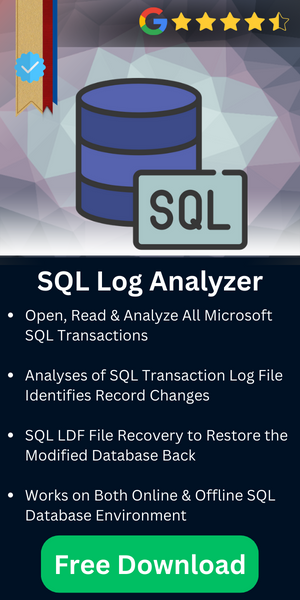Implementation of Transaction Replication In SQL Server

Summary: This article talks about transaction replication in SQL server databases as it is a very useful utility for users. Moreover, all the relevant aspects are present in the blog including the agents & jobs, advantages as well as disadvantages. Go through the complete blog to understand the detailed topic.
Table of Content
Introduction
The transaction replication in SQL Server is very helpful in that case when you require data up to date in one or more locations. Transactional replication can be applied on one server to another server and also it is useful if there is a high volume of DML changes because it needs low latency between the time changes.
Mainly the transaction replication is performed by three major agents of SQL Server (Snapshot Agent, Log Reader Agent, and Distribution Agent). In this article we will more understand the basic implementation and the working of these agents of transaction replication in SQL Server.
What is Transactional Replication in SQL Server
Basically the transaction replication works between N number of Servers. If one server is being changed by a committed transaction, the rest servers are simultaneously updated through transaction replication. The server on which the transaction is performed is known as the primary server or publisher and the servers that receive the committed transaction is known as secondary servers or subscribers. It’s crucial to solve SQL server transactional replication performance for better results as well. The transaction replication provides an exceptional backup to the regular database changes.
Mainly, the transactional replication starts by receiving a primary server snapshot and thereafter it is copied to the secondary servers. Then all the changes of primary server are logged in real time and replicated on the secondary servers. Transactional replication doesn’t copy only effected changes, but it does replicate to each change through replication agents.
Transaction Replication Agents and Their Jobs
Basically, the transaction replication in SQL Server is performed by the following three agents:
- Snapshot Agent
- Log Reader Agent
- Distribution Agent
These three agents are the major parts of SQL Server, which perform the transactions replication task in SQL Server and provides a neat and clean response to the server. Let’s understand the each term & then we can move to the SQL server transactional replication pros and cons as well.
- 1. Snapshot Agent
- The Snapshot Agent organizes snapshot files, which contain schema and data of published database objects like tables, that stores the files in the particular snapshot folder.
- 2. Log Reader Agent
- The Log Reader Agent works at the Distributor; it normally works constantly, but it can also work according to your schedule that you have established. When accomplishes, at first the Log Reader Agent examines the publication transaction log and identifies DML statements or other changes.
- 3. Distribution Agent
- The Distribution Agent performs multiple jobs, it works at the Distributor for pushing the subscriptions and at the Subscriber for pulling the subscriptions. The distribution agent moves from the transactions to the Subscriber. The distribution agent also matches the Publisher and Subscriber if any subscription is marked for validation.
Advantages of Transaction Replication in SQL Server
- Transaction replication can be used to retain a warm standby SQL server.
- It can replicate the data from one Server to another Server with low latency.
- The transactional replication can be implemented at the object level of the database such as the table level.
- Transactional replication can be applied when you have fewer data to protect, and you should have a fast data recovery plan.
- It can be used for other general uses like update data without executing the process on your relatively busy publisher.
Disadvantages of SQL server Transactional Replication
SQL server transactional replication limitations are also present here just like the advantages. Also, being aware of these will help us get the best perspective & knowledge to use it well.
- After establishing replication, the schema changes will not be exist at the subscriber
- Changing servers wipe out transaction replication configurations.
- If a disaster occurs, you have to manually switch servers by transmitting all the applications to the subscriber.
Also Read: Know How to Fix Microsoft SQL Server Login Failed Error 18456 Safely?
Conclusion
The transaction replication in SQL Server mainly used for updating data between one or more Server. It is a very fast method for updating and backing up the database. Any modification of the database is logged with low latency and update quickly in each Server, which is connected to primary database. The SQL Server transaction replication can be helpful in recovery of the Database.
